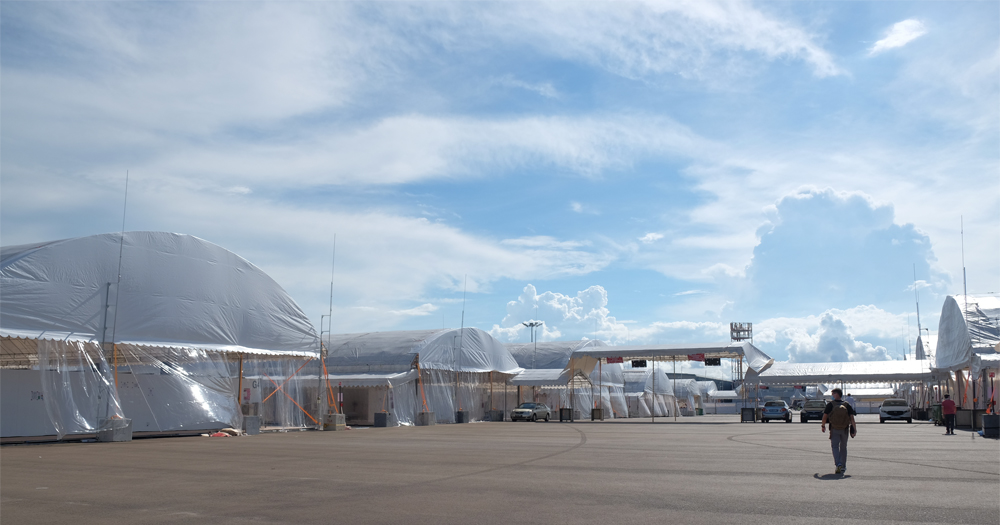Previously, we went to Changi Exhibition Centre (CEC) Community Isolation Facility's indoor area to look at how the conditions were like for the Covid-19 patients living there.
Today, the facility has expanded outdoors to house 1,700 more patients for the second stage of their isolation. Before the outdoor area was constructed, these second-stage patients would have been transported to another accommodative facility, such as army camps.
The patient population at CEC is largely made up of migrant workers from India and Bangladesh. All are male.
As of June 4, more than 6,000 patients have been admitted into CEC since the start of outbreak.
With the expansion, the patients would not have to uproot too abruptly or adapt to a whole new environment, and the staff needed to care for these patients can be kept lean.
The 33,000m2 indoor area is called the Community Care Facility (CCF), while the 40,000m2 outdoor area is called the Community Recovery Facility (CRF).
On Wednesday, June 3, the CRF received its first batch of 500 patients from the CCF.
The recovery process for patients at CEC
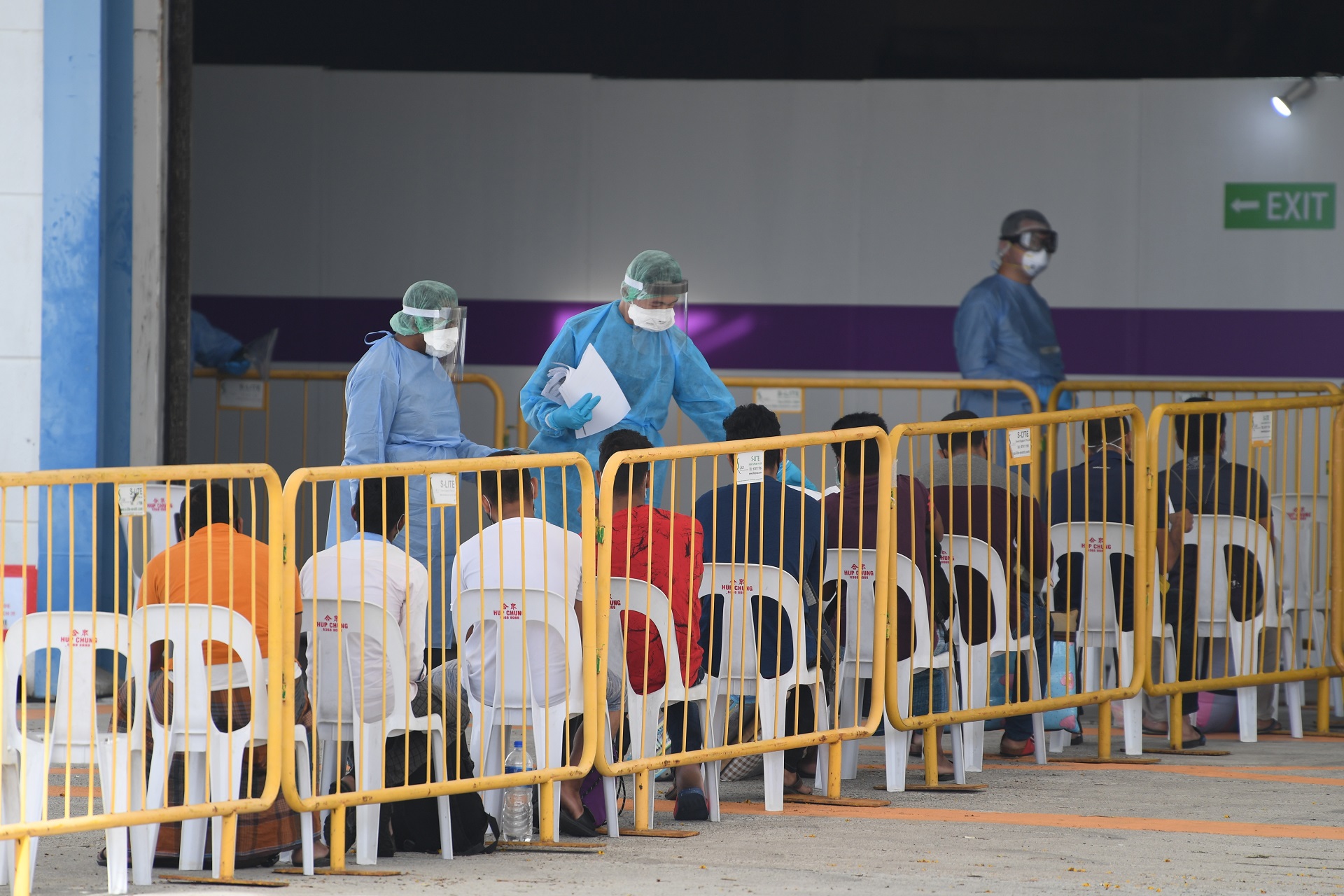 Photo via PIONEER/Facebook
Photo via PIONEER/Facebook
When a confirmed Covid-19 case enters CEC, he will first be placed inside the indoor area for 14 days, so that he would have adequate care if his condition worsens.
After 14 days in the indoor area, if patients have mild or no symptoms and do not require further medical care, they would be transferred to the outdoor area to monitor their health for seven days.
When those seven days are up, they can be discharged from the facility to their dormitories or other accommodations if they are assessed to be clinically well, as stated in the Ministry of Health's revised policy. They will not need to do swab tests.
In their accommodations, they will be given a further seven-day leave to rest and recover.
After completing the 28-day isolation, the recovered individuals can return to work.
Living conditions of the outdoor facility
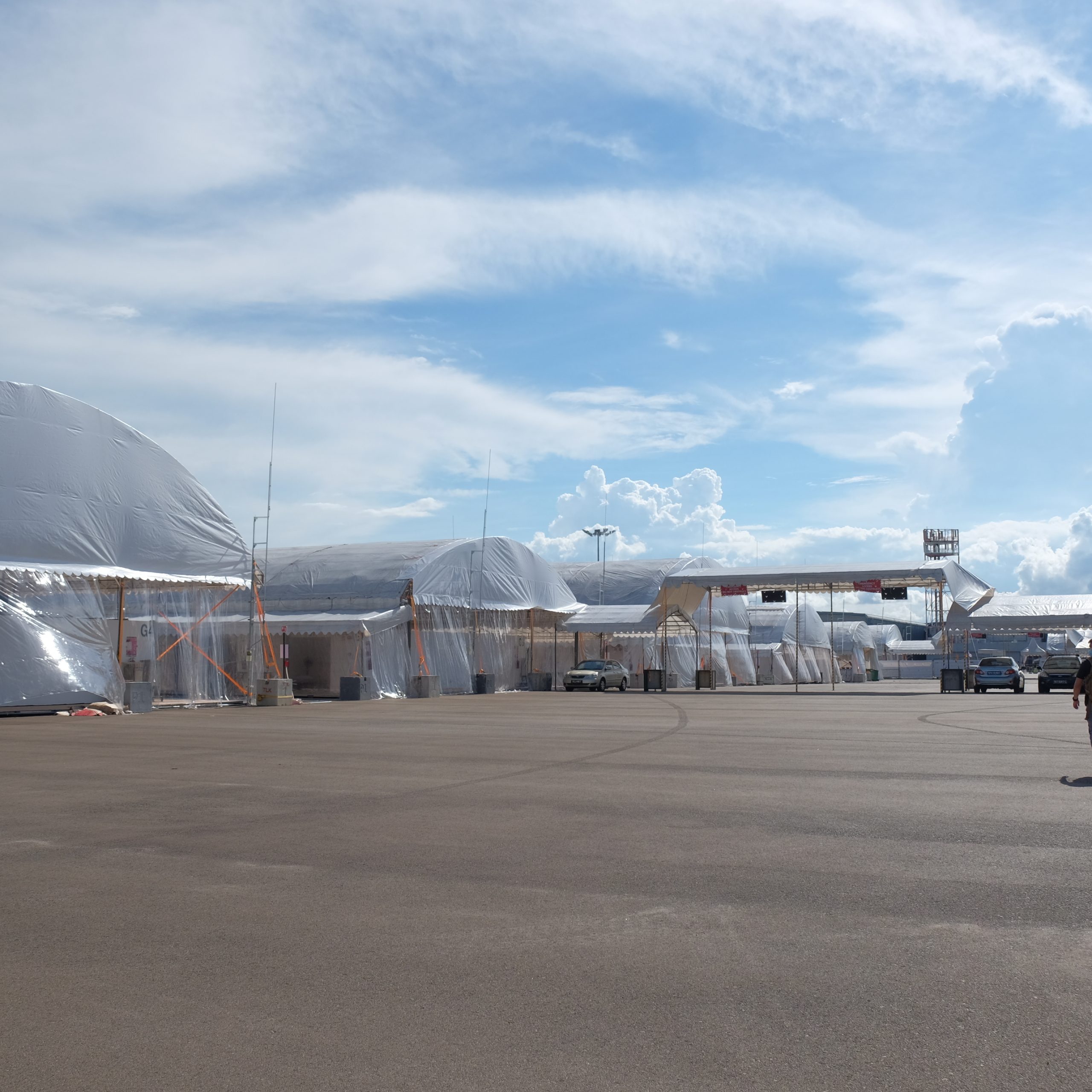 Photo by Rexanne Yap
Photo by Rexanne Yap
Yes, it is warm.
As the tentages are erected on an empty plot of tarmac - devoid of natural shade - the sun constantly beats down on thin canvas roofs, resulting in an internal temperature that ranges between 30 and 32°C.
When it rains, the patients themselves will have to manually roll down the rain shields to prevent rainwater from getting into the tentage.
Although the CEC executive committee had explored ways to install space coolers to help with the heat, the outdoor area experiences constant land and sea breezes which blow away the cool air almost immediately.
Rooms and beds
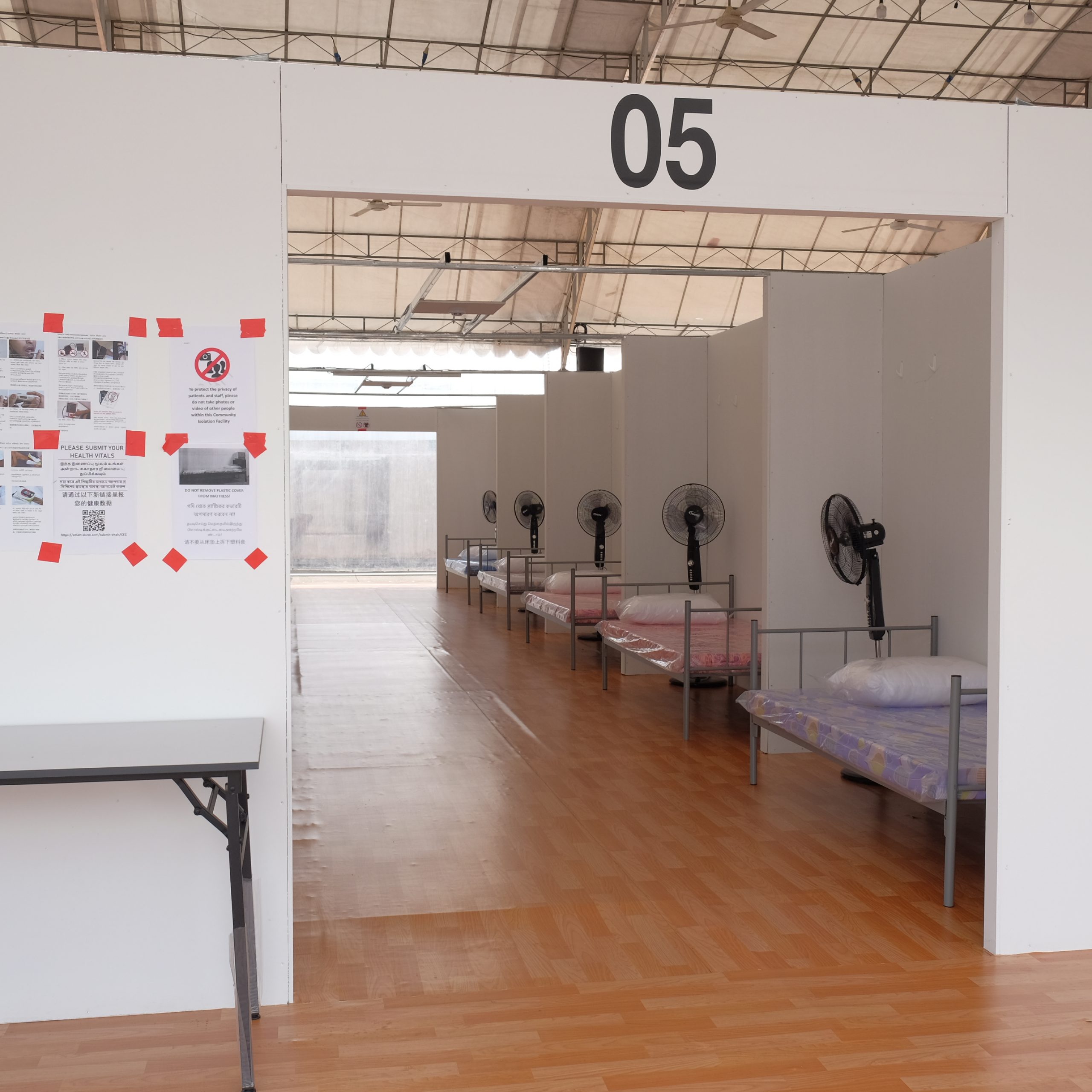 Photo by Rexanne Yap
Photo by Rexanne Yap
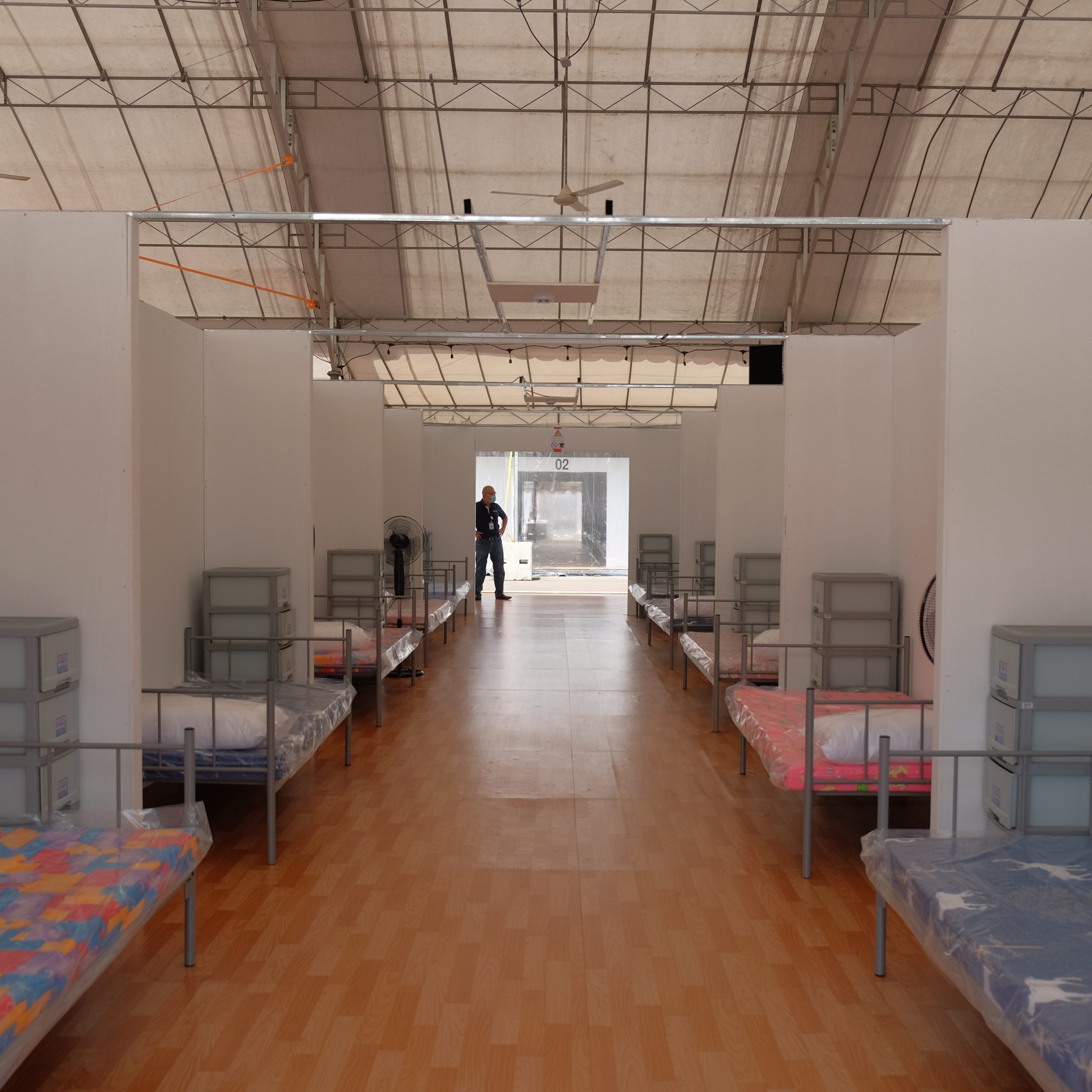 Photo by Rexanne Yap
Photo by Rexanne Yap
To ensure that patients get as much ventilation as possible despite the conditions, each patient is given his own standing fan, and there are ceiling fans installed on the roofs of the tentages too.
The partitions between the rooms have also been designed to allow for more ventilation from the land and sea breezes.
Similar to the rooms in the indoor area, each room houses up to 10 beds, and everyone has their own chest of drawers.
Vinyl platforms were chosen for the floors of the tentages, which are easy to sanitise and elevates the floor away from rainwater. Outside the rooms, a table will hold a machine for the patients to check their temperature, blood pressure and pulse oximetry reading three times a day.
Medical care
There are two air-conditioned, 24/7 teleconsult stations in the outdoor area to attend to any medical needs of patients. Two nurses, dressed in full personal protective equipment (PPE), will be stationed to care for the patients.
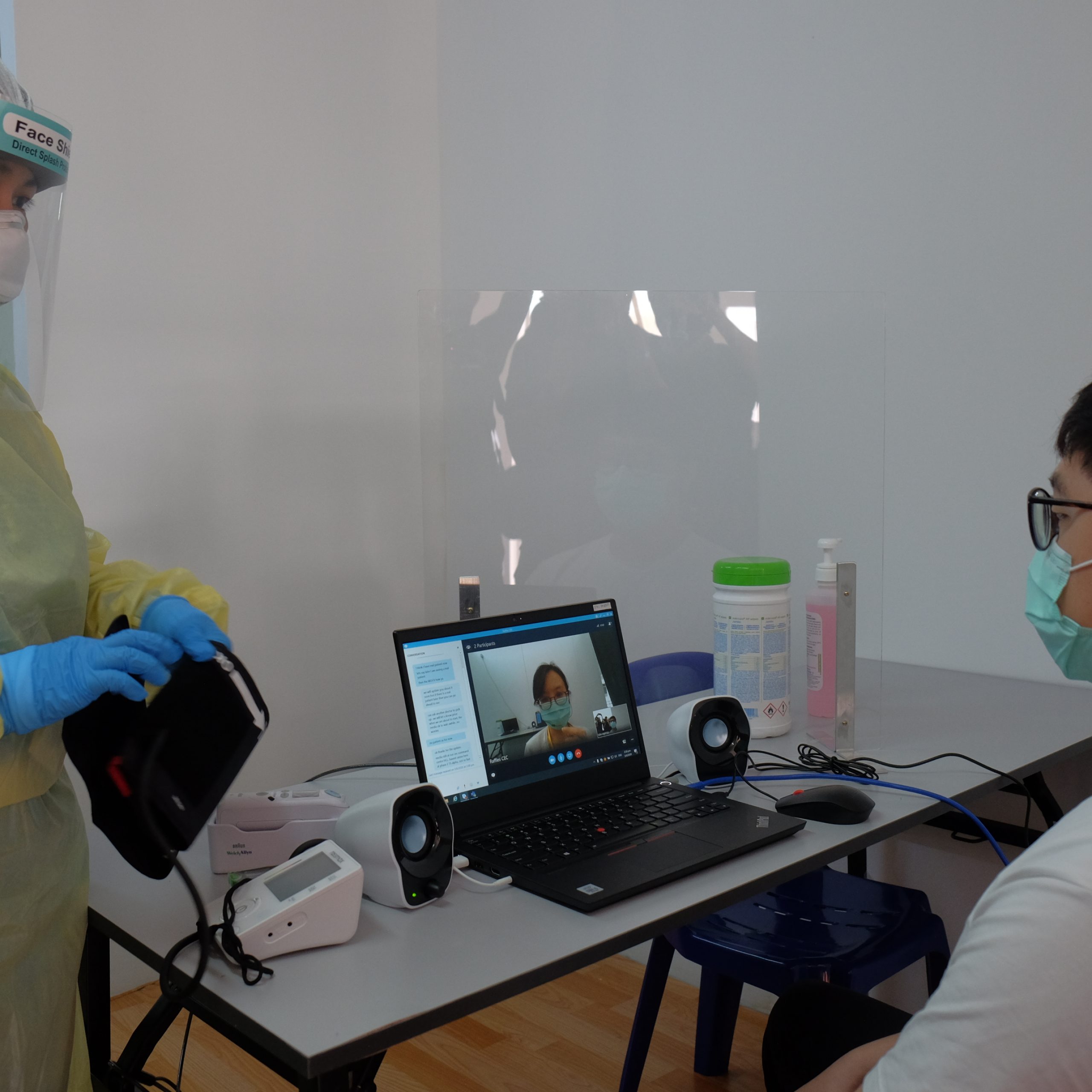 Photo by Rexanne Yap
Photo by Rexanne Yap
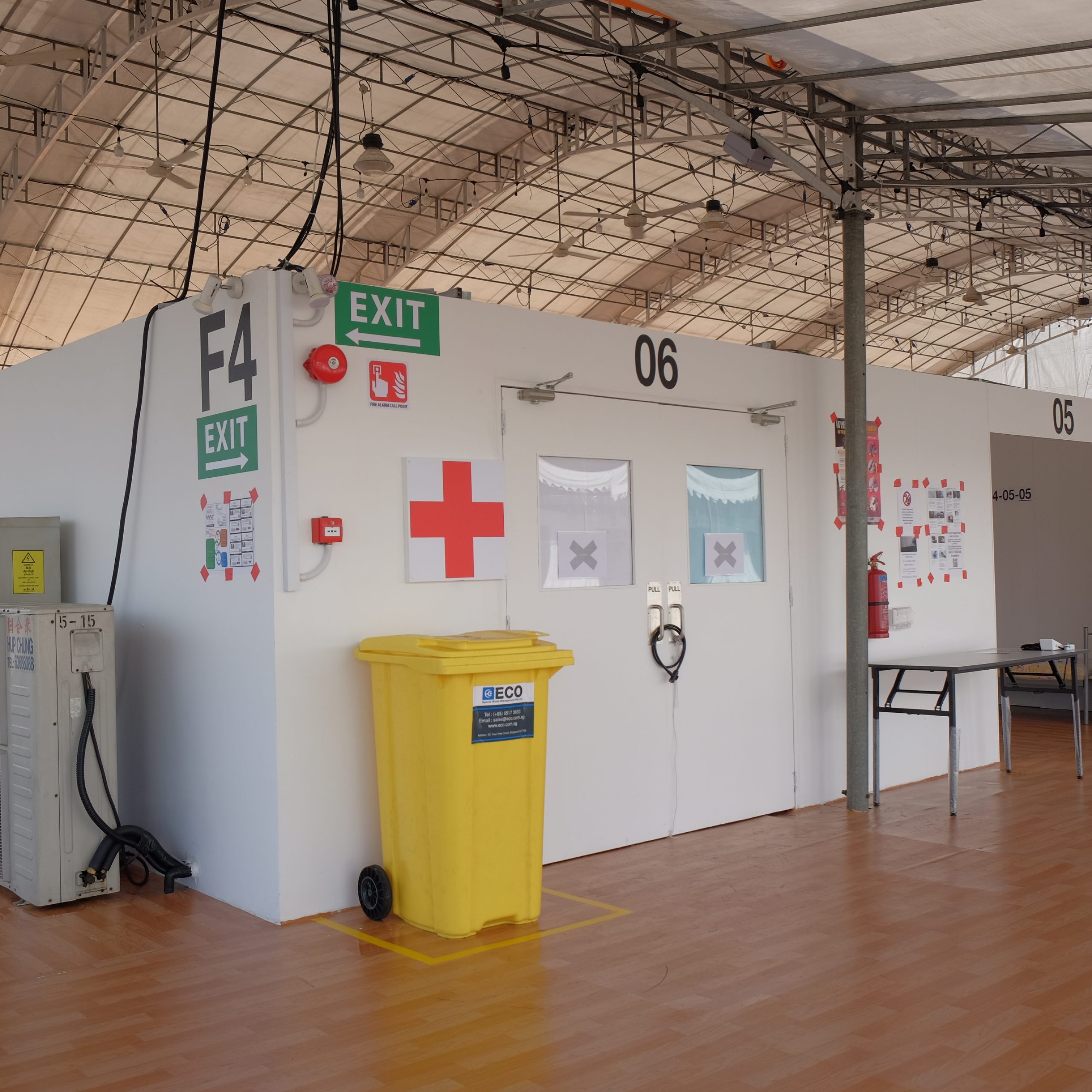 Photo by Rexanne Yap
Photo by Rexanne Yap
These stations are equipped with five sick beds, a medicine dispensary, and equipment to do any urgent resuscitation or rehabilitation to stabilise a patient before transportation to the nearest hospital, Changi General Hospital.
During the teleconsult sessions, volunteer translators can also be engaged. Only when a doctor deems that a patient needs a personal examination, such as when they have abdominal pain, would doctors physically step in to diagnose the patient.
Pest control
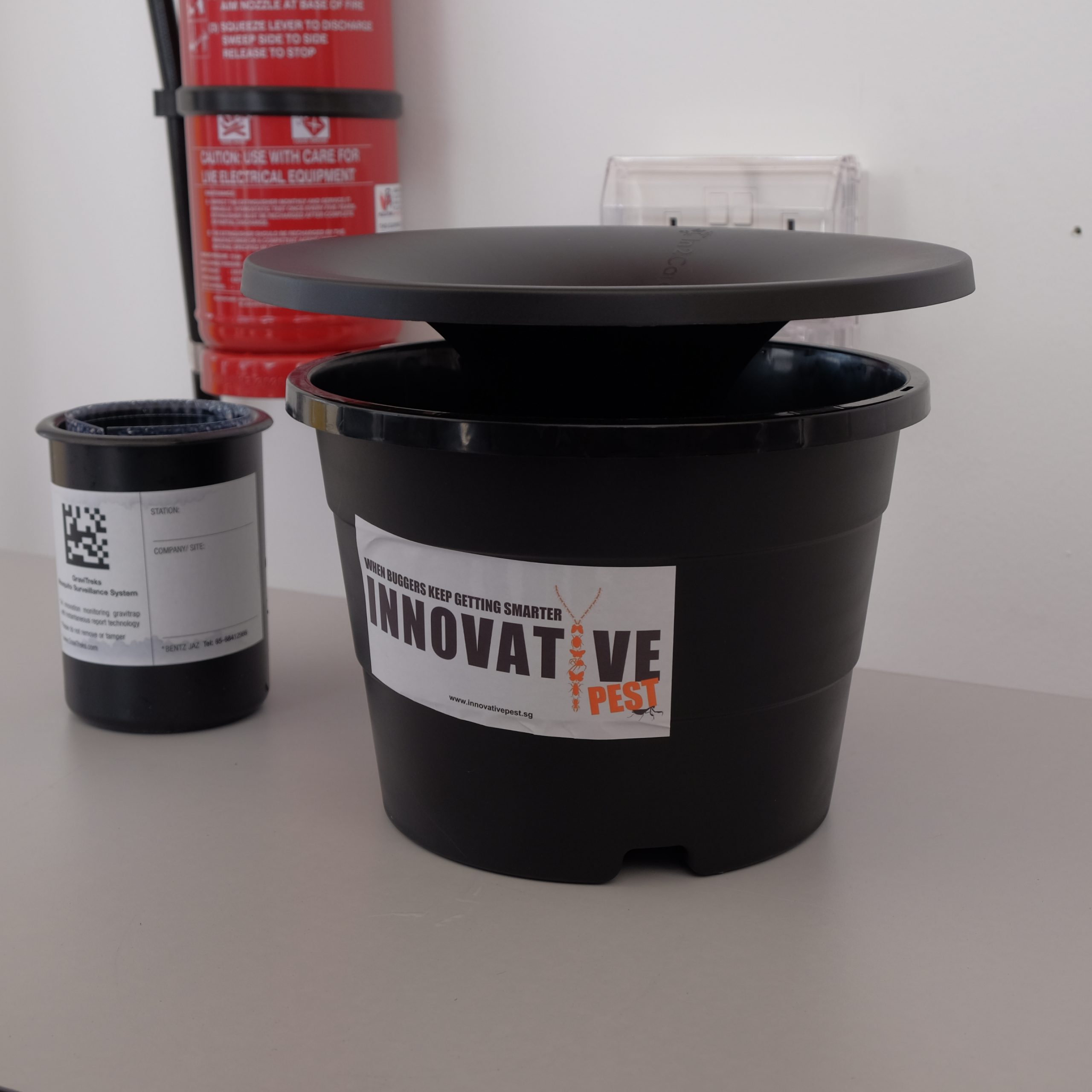 A Gravitrap and mosquito trap. Photo by Rexanne Yap
A Gravitrap and mosquito trap. Photo by Rexanne Yap
As the outdoor area is more exposed to the surrounding forested area, the CEC executive committee decided to proactively engage pest control to clear the area before admitting patients into the CRF.
They even consulted an entomologist from Lee Kong Chian Natural History Museum at the National University of Singapore (NUS) to do a survey on the types of insects and pests in the area and find solutions to contain them.
Although it has not been an issue, mosquito control is their top priority.
Eight mosquito traps will be placed around the perimeter of the facility, while eight Gravitraps will be placed within the facility to monitor the species and frequency of pests. Insect netting will be placed around the rooms. Fogging and BTI misting treatments will also be done regularly to prevent any mosquito outbreak.
Each day, pest control technicians will also check for any mosquito, ant, termite, cockroach, bedbug and/or rodent infestations, targeting specific rooms if needed.
LED lights are also used throughout the facility as it is less attractive to insects compared to conventional lights.
Food
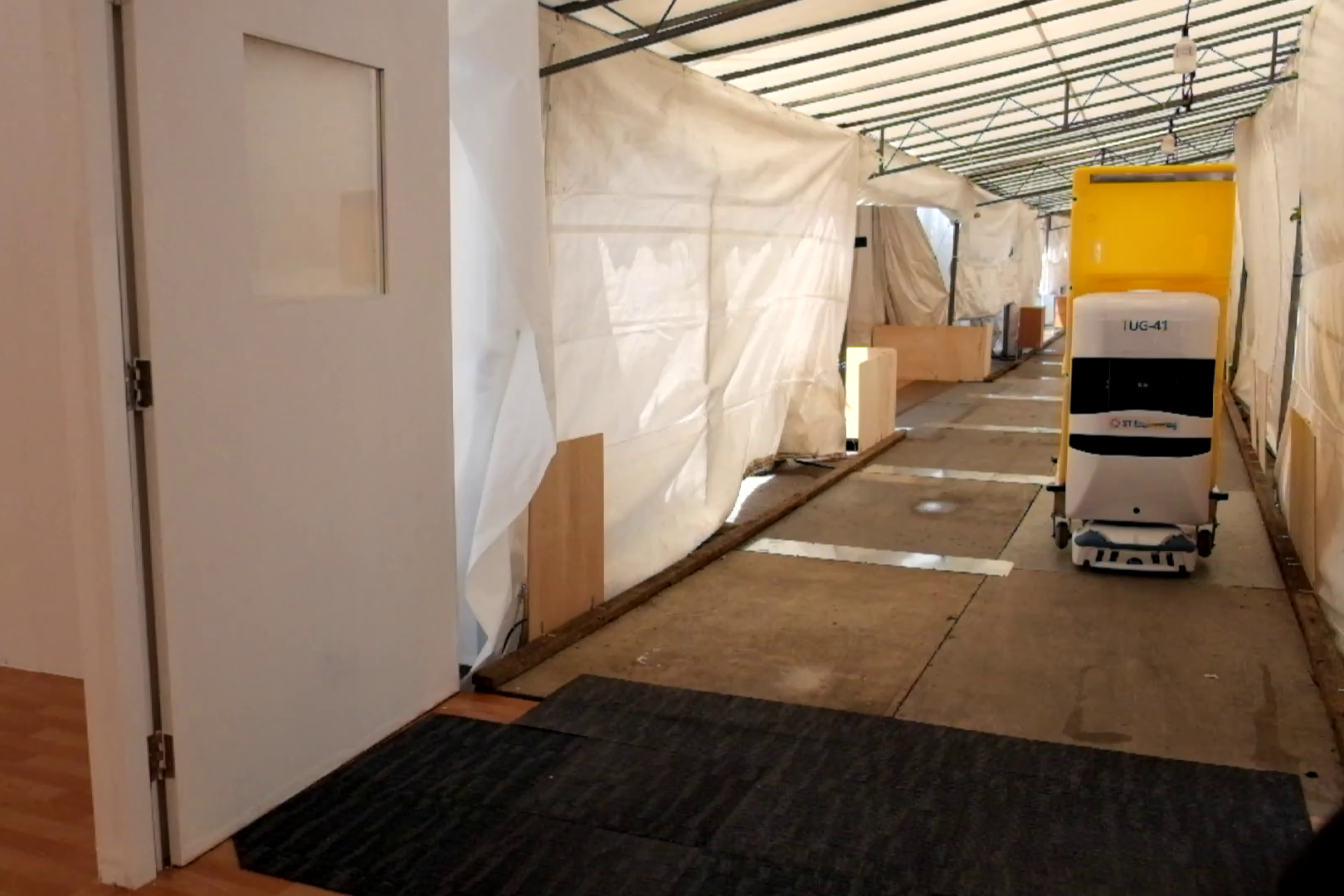 Photo by Rexanne Yap
Photo by Rexanne Yap
Similar to the indoor area, 16 food robots will be deployed to deliver food to the patients in the CRF. Patients will directly collect food from the yellow carts on the robots, and some patient volunteers have offered to take their roommates' food to their rooms, which solves the issue of overcrowding during mealtimes.
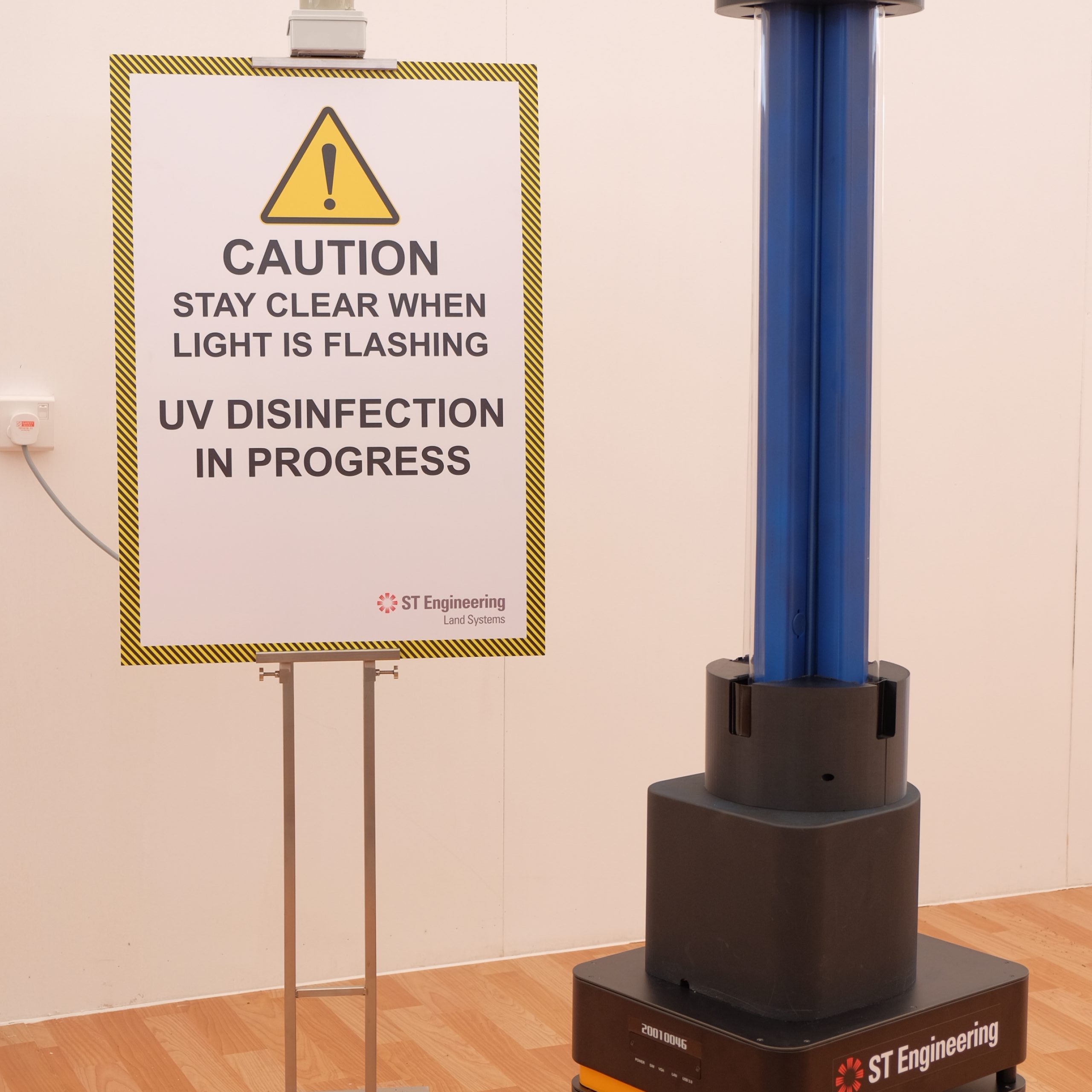 Photo by Rexanne Yap
Photo by Rexanne Yap
After mealtimes, these food carts will be given a manual wipedown and disinfection by a UV disinfecting robot.
All the food provided is halal, and comes in four different cuisines, namely Indian, Bangladeshi, Vegetarian and Chinese.
On festivities, such as the recent Hari Raya Aidilfitri, patients were given something different as well.
Courtyard and toilets
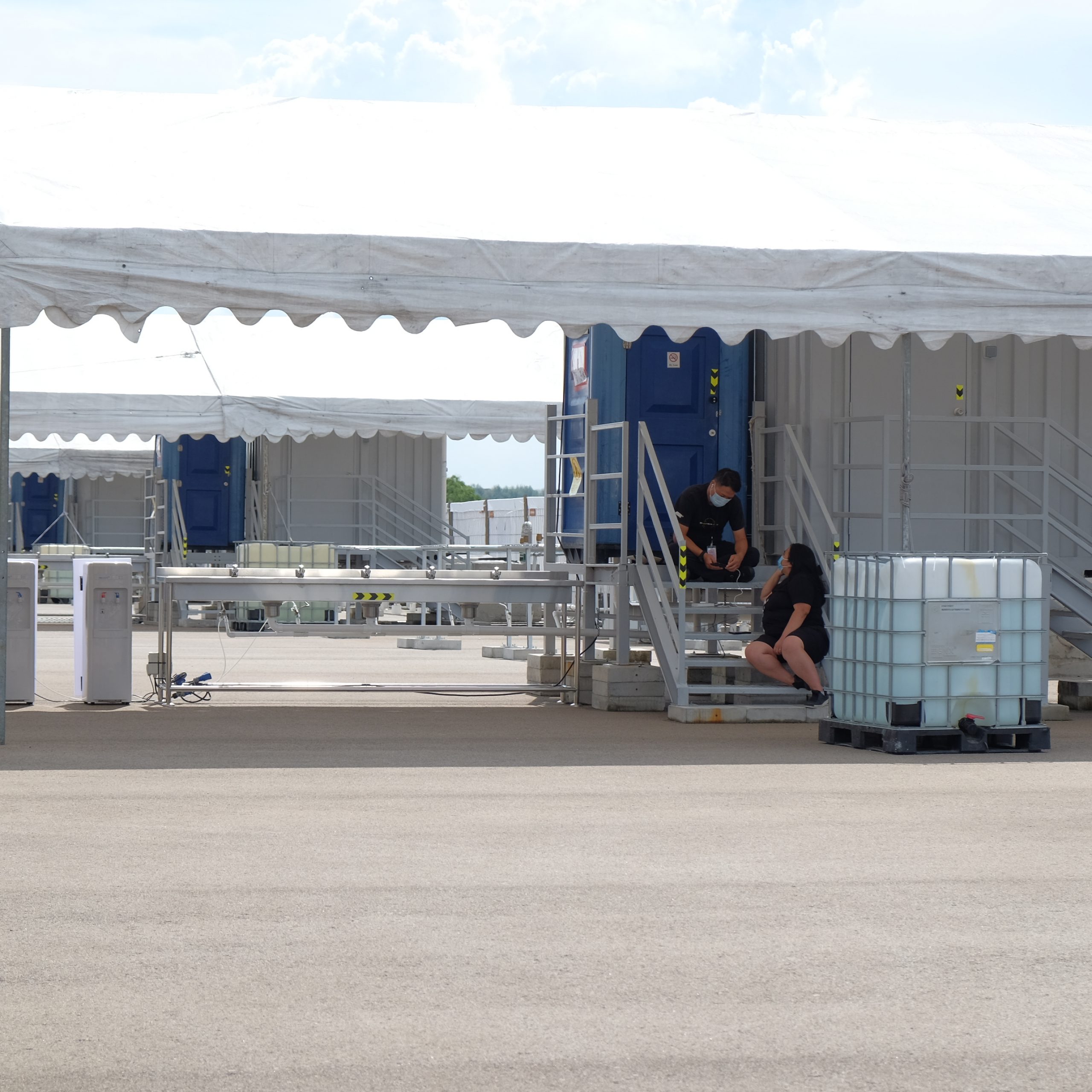 Photo by Rexanne Yap
Photo by Rexanne Yap
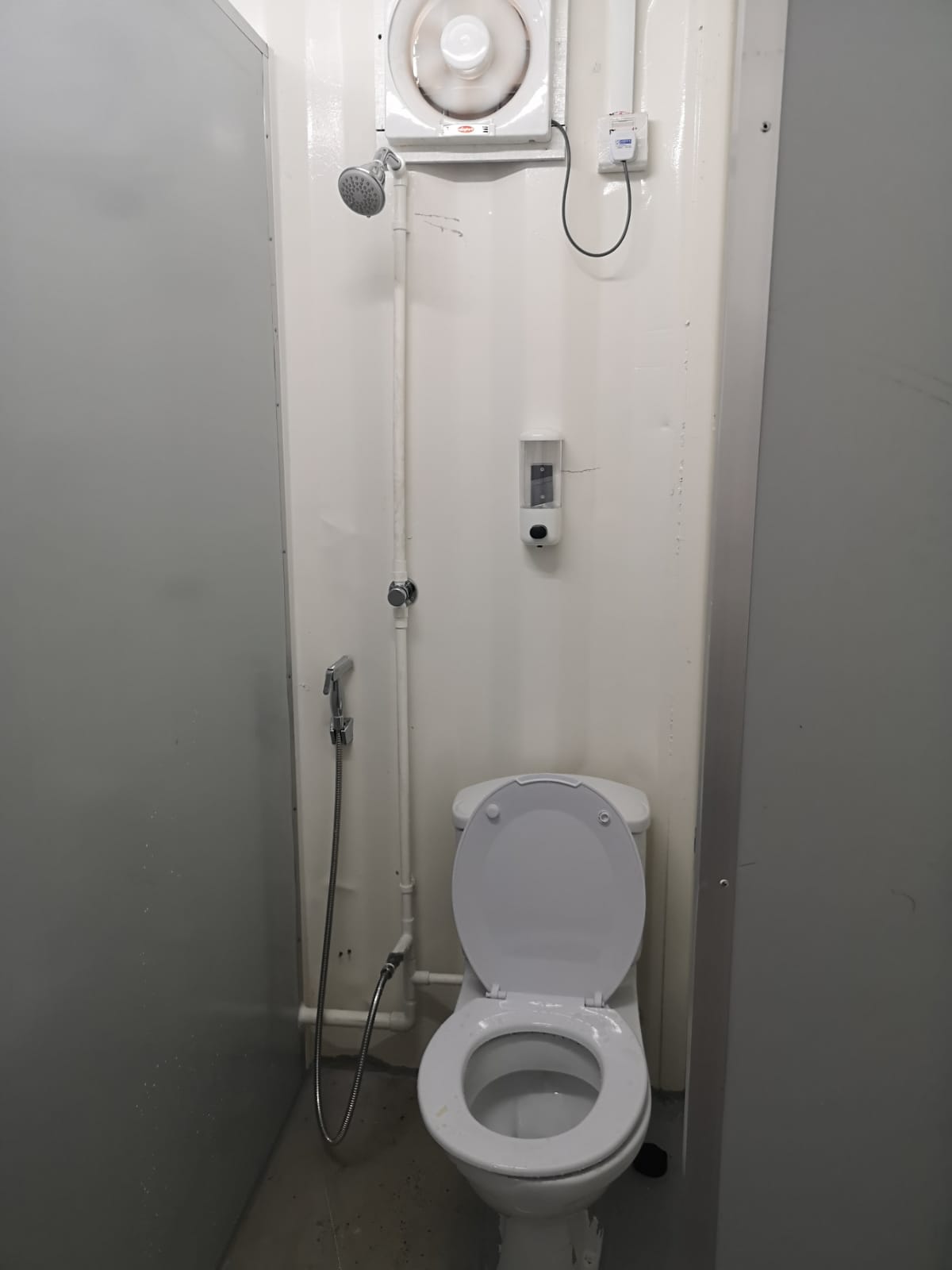 Photo courtesy of CEC facility committee
Photo courtesy of CEC facility committee
In the courtyard, container toilets, laundry poles, washing areas and water coolers are provided, similar to those inside the indoor area.
Solar Panels and energy
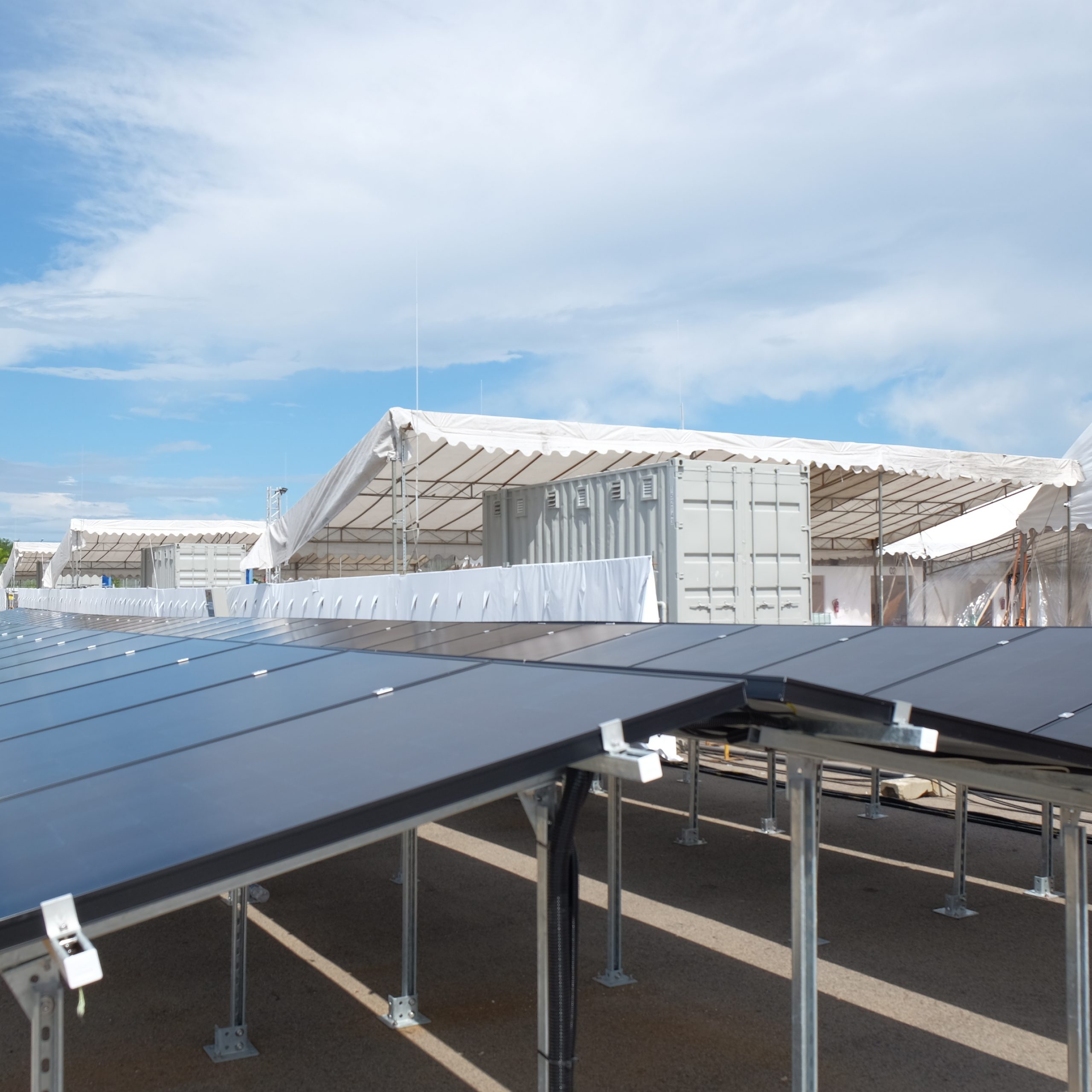 Photo by Rexanne Yap
Photo by Rexanne Yap
There are no power lines to feed the energy needs of the CRF. As a result, the executive committee had to use diesel-powered mobile generators to power the facility.
To reduce the number of these carbon-emitting and noisy generators needed, about 1,130 solar panels have been installed along the perimeter of the CRF to supply electricity.
There are three ground arrays (648 panels) and one roof-mounted array (480 panels) producing a monthly output equivalent to the average monthly energy usage of 100 4-Room HDB apartments.
While the solar panels currently covers 20 per cent of the total energy used in the CRF and 75 per cent of energy used in CCF, there are plans to install batteries that can store the energy produced by the panels for future use.
The use of solar panels has also resulted in smaller and fewer diesel generators to be deployed, reducing the number of generators on-site by half, and hence reducing the noise pollution also.
 Solar tent. Photo courtesy of CEC facility committee
Solar tent. Photo courtesy of CEC facility committee
In the coming weeks, the Solar Energy Research Institute of Singapore at NUS and the Energy Research Institute at Nanyang Technological University will also be piloting new innovations to use solar panels more efficiently, such as solar-panelled fences, sound barriers and roofs.
These solar panels will be repurposed once Covid-19-related operations come to a close.
Staff safety
Sanitation
Apart from proper donning and disposal of PPE, SafeEntry protocols and telepresence technology, the staff working in CEC have extra precautions to ensure that they are not infected by Covid-19.
Acrylic screen dividers have also been installed in all work and rest areas, such as those in the operations room, medical centres, so that people do not spread droplets as they eat and talk across each other.
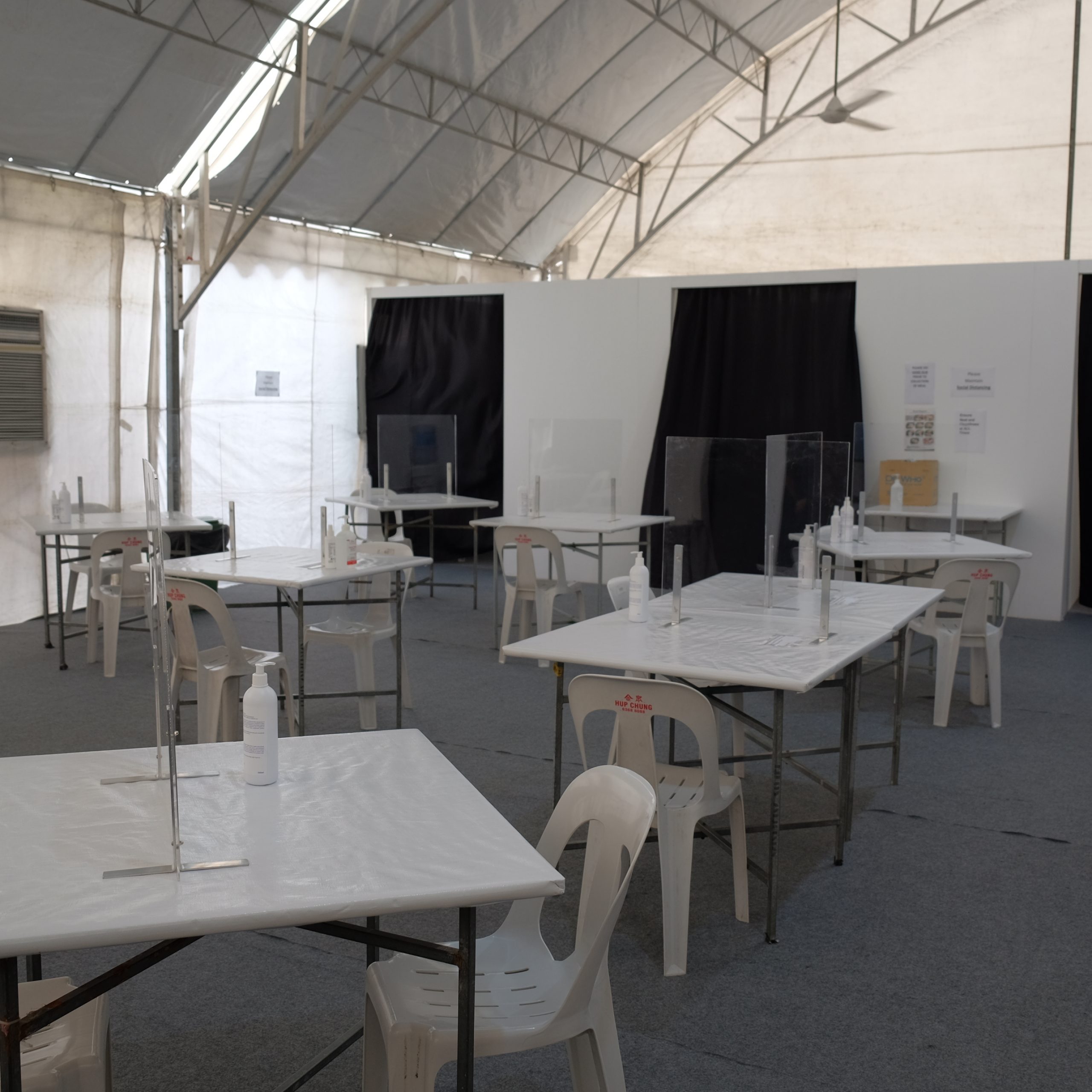 Medical workers' rest area. Photo by Rexanne Yap
Medical workers' rest area. Photo by Rexanne Yap
Additionally, there are five UV disinfecting machines deployed in CEC to disinfect up to 30 surgical masks, face shields, mobile phones and personal belongings within 15 minutes.
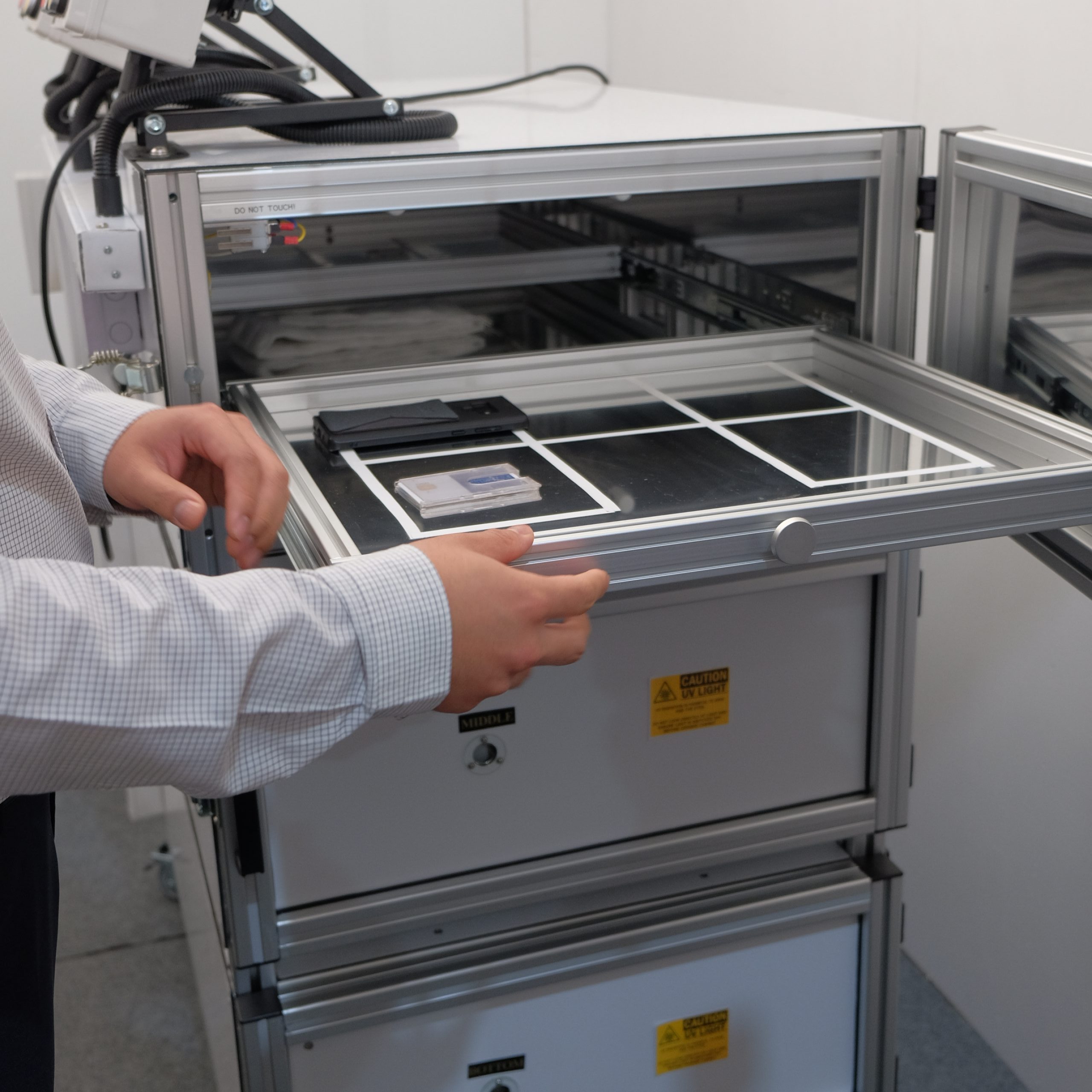 UV disinfection cabinet. Photo by Rexanne Yap
UV disinfection cabinet. Photo by Rexanne Yap
Developed by DSO National Laboratories, these cabinets were specifically built by Singaporean researchers for the fight against Covid-19.
Surveillance
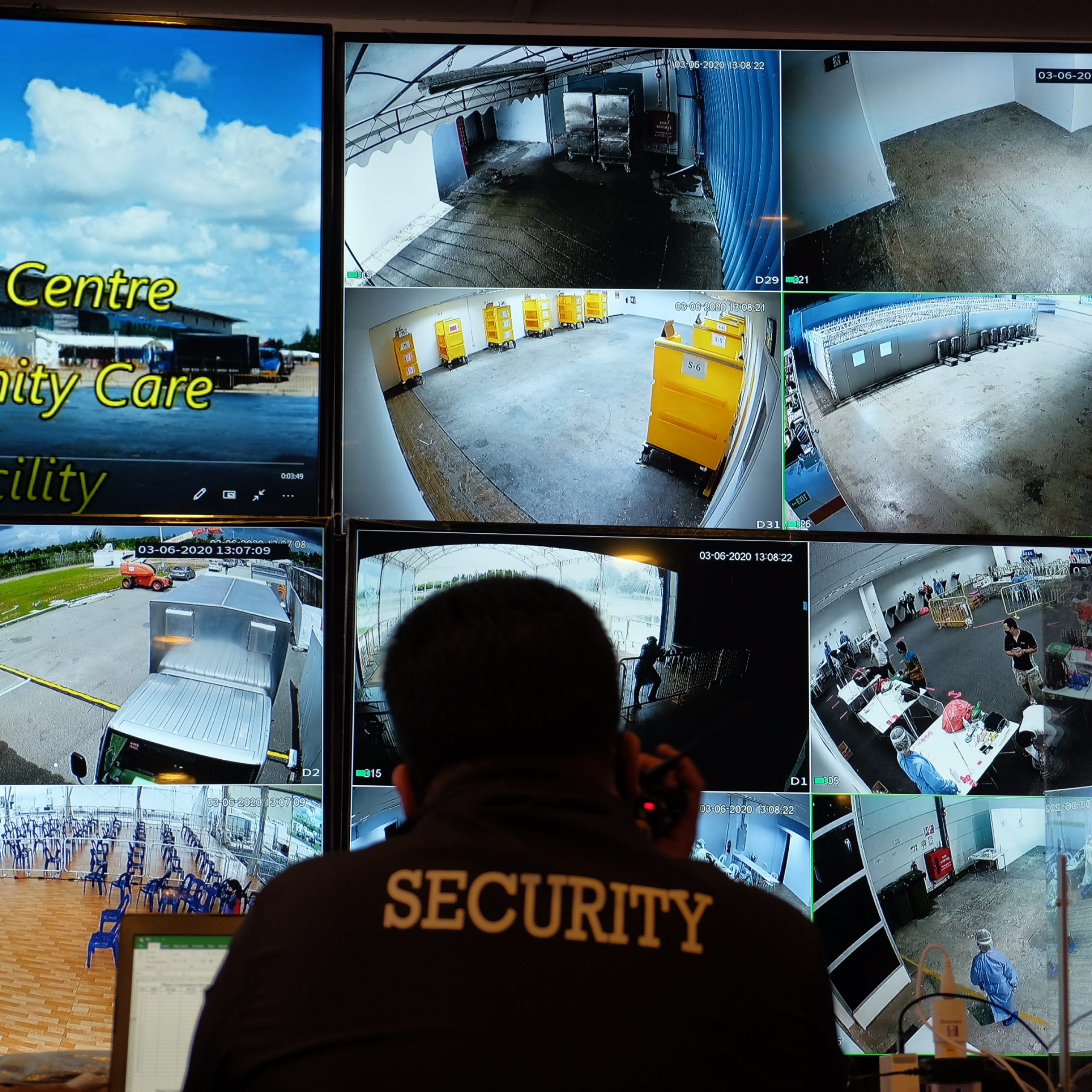 Photo by Rexanne Yap
Photo by Rexanne Yap
Security cameras are monitoring the communal areas and perimeter of the facility to ensure safety and prevent the contact of the patients with Covid-negative staff.
Security cameras do not monitor the sleeping and private areas of the patients.
Furthermore, the security guards working in the Covid-positive red zone have to be less than 45 years old, to reduce the risk of infection. At any one time, there are 17 officers working in the red zones of the CCF and CRF.
Alert systems with geo-fencing and crowd monitoring capabilities have been set up in specific areas in the red zones to alert security officers if unauthorised personnel are detected in those areas and to facilitate crowd control.
Top Photo by Rexanne Yap
If you like what you read, follow us on Facebook, Instagram, Twitter and Telegram to get the latest updates.
